

|
change currency to:  Euro Euro Złoty Złoty |
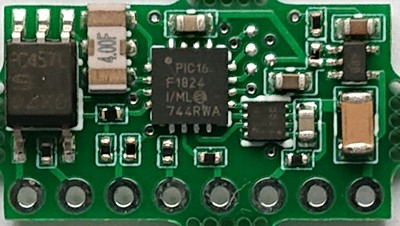 MINICVTEMPORARY UNAVAILABLE
Some time ago I've made what seemed to be the world's smallest MIDI-2-CV converter, you can see it here. The idea behind it was to have something that you could mount inside toy synthesizers like Monotron, but probably because of affordable price and really good specs, people used it everywhere, including famous and expensive vintage synths like minimoog or VCS3.
It didn't feel right, as it was really simple converter, yet more precise than many opensource coverters circulating around. Components placed on both sides of PCB helped a lot to achieve small size, but made assembly more complex. And finally, it was not too easy to install because of soldering pads in 2mm distances.
So after very long time when it was not available any more I finally created its successor, redesigned from scratch, sharing only the name with its grandpa.
This new MINICV version 2 may be small, but don't let the size fool you. This is well grown serious converter, precise and packed with features. This is what it can do at the moment:
MINICV comes with factory preadjusted scale and offset settings to best match 1V/oct at 100k load. Those settings are also recalled after factory reset command.
Below is example graph of MINICV tuning errors measured in 26 randomly selected MINICV units. Horizontal axis range spans over 5 octaves, vertical one is scaled in milivolts of error from perfect 1V/oct scale.
Full scale is +/-0.8mV, wchich is very close to +/1 cent of pitch errors if it was used as VCO driver.
As you might expect, there's one marketing trick applied - the range in this graph includes only 60 notes, without top one. This is because MINICV top limit is about 4.985V so it cannot reproduce top note correctly in pure 1V/oct scale.
One way to overcome this limitation is to scale it lower, like 0.997V/oct and instead of typical 100k resistor going to VCO summing node, use 99.7k. Or better 0.976V/oct with 97.6k which is more likely to be found value.
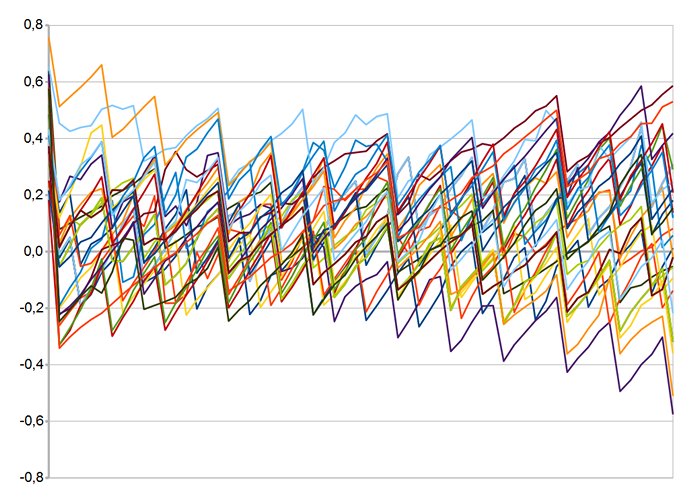
For your amusement here are few examples of MINICV response timing. First is overall look of MIDI CLOCK pulse. Upper trace is obviously MIDI input, decoded right below. Yellow trace is CLOCK output shown with long persistence to catch the jitter. As you can see the pulse last for about 400us, and appears quickly after the last bit of MIDI Clock (F8 in hex) is received. Click kthe image for full size view.
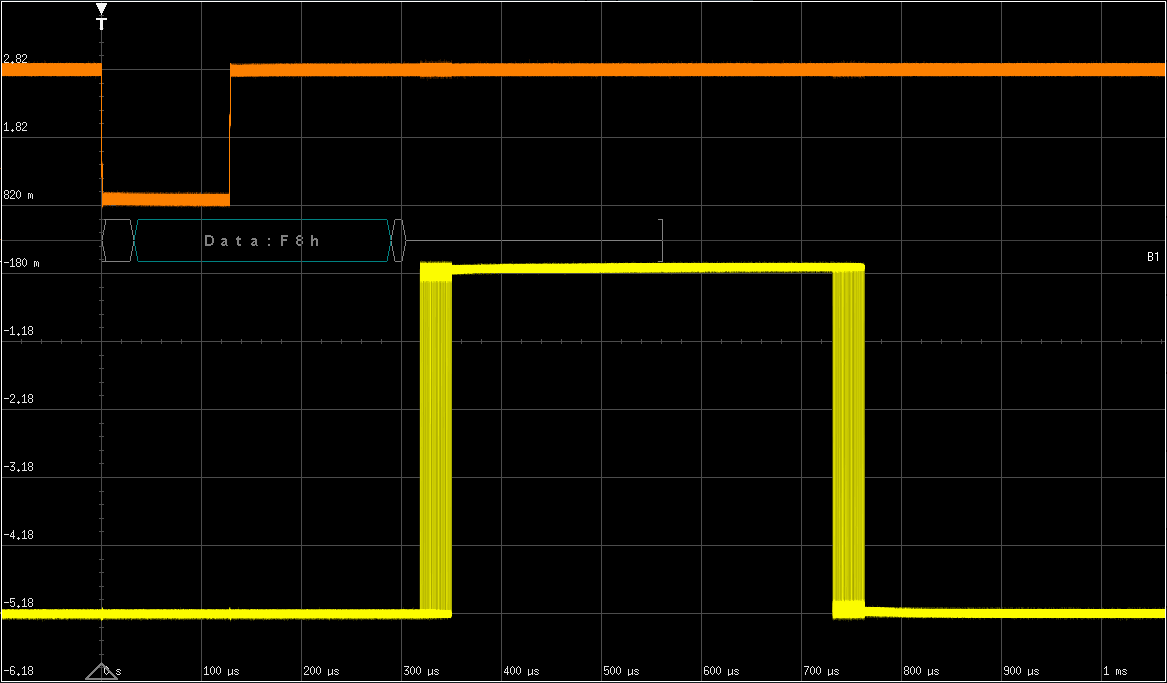
Next 2 pictures are shown in zoom, to measure the clock pulse delay and jitter. They are selfexplanatory, so no more talkin'
 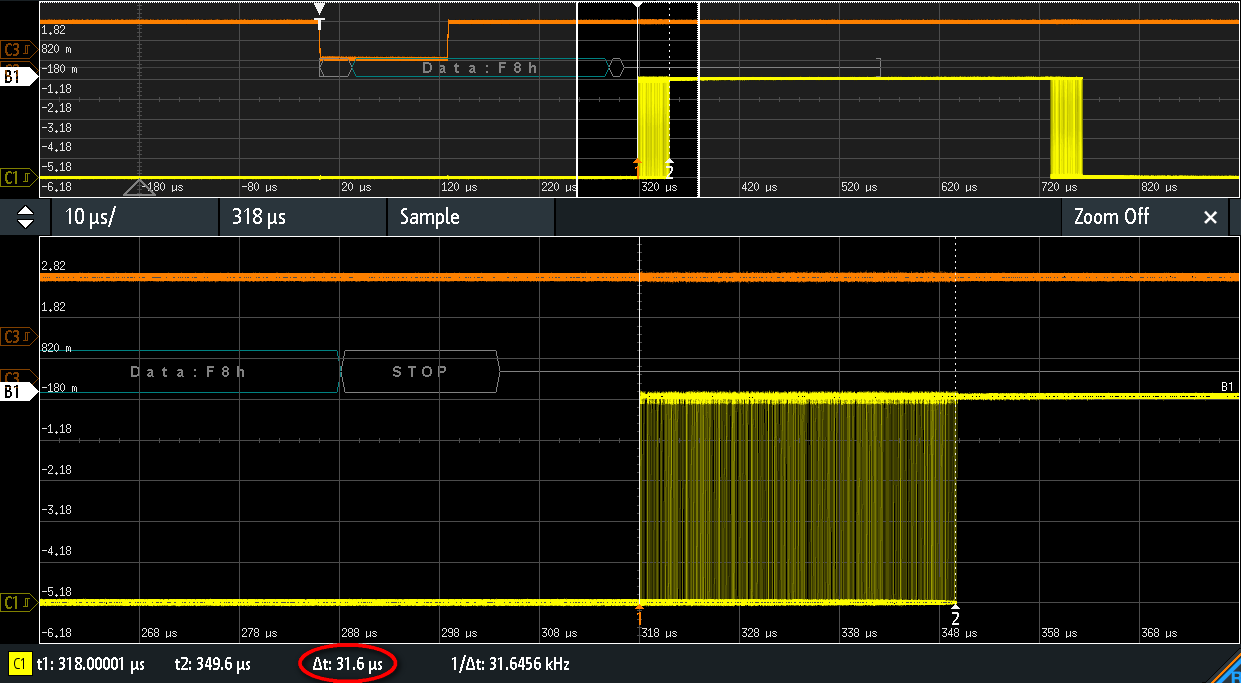
Next 2 pictures show MINICV response to MIDI note. The 2nd one shows retrigger in action. In this case retrigger was set to minimum duration, that is 0.1ms. It is user configured up to 5ms. Orange trace is MIDI input decoded to hex numbers right below, green trace is Gate, and yellow trace is CV. As you can clearly see, CV is updated less than 200us after last bit of a note is received
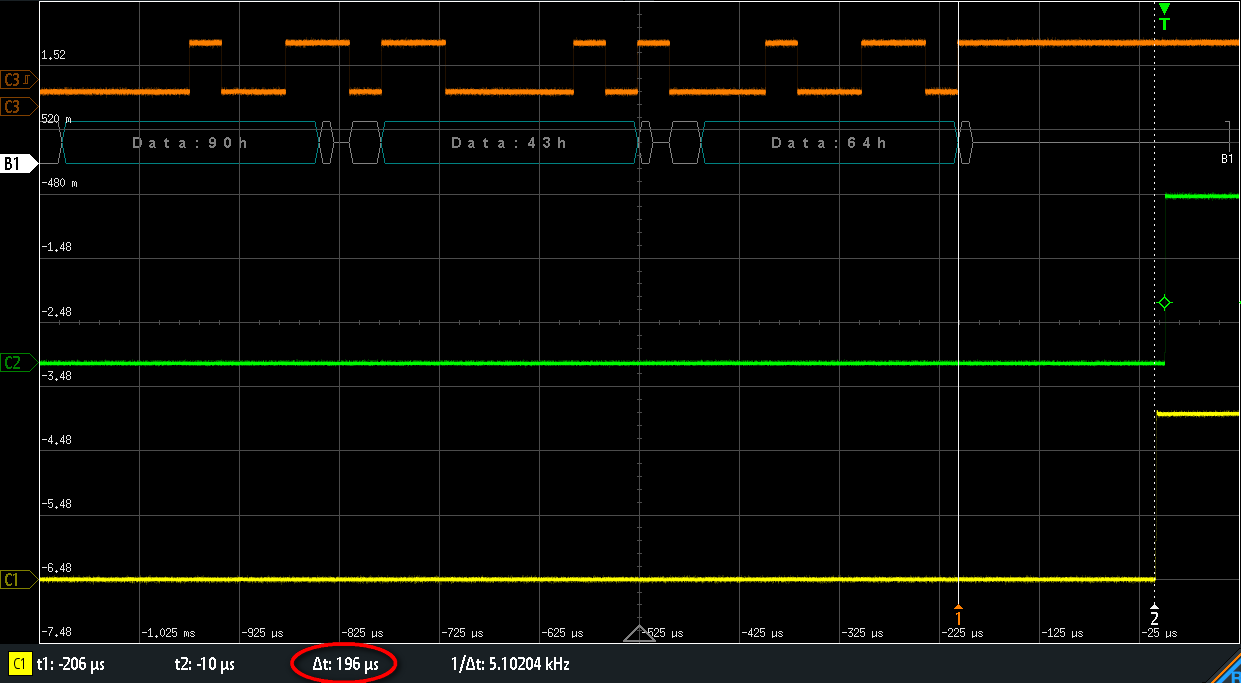 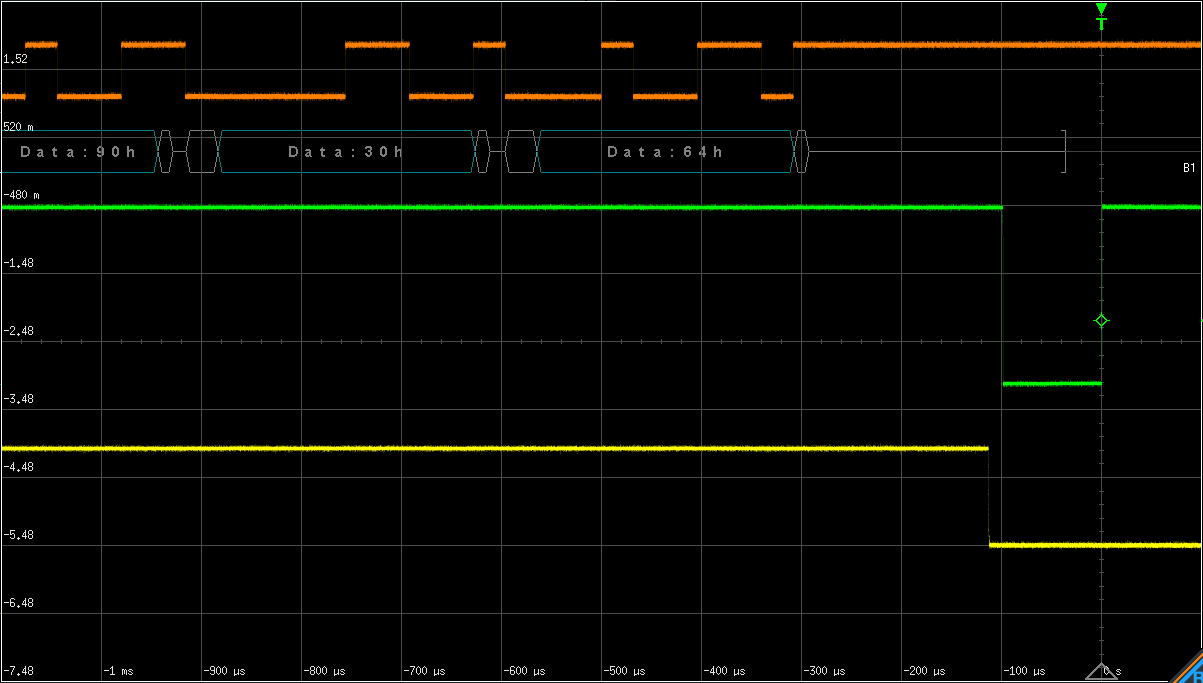
Fine print here: This converter is made to be soldered inside a synthesizer or module, where CV load does not change. It is not intended to be simply boxed and carried as general use universal MIDI-2-CV converter. To do so you must add a CV buffer to maintain proper scale regardless of kind and number of loads plugged to it. Later you should be able to find proper buffer board here, either in ready to use form, as bare PCB, and as Gerber files to make your own. (*) What does it mean "top note always at 5V" in Hz/V scale? Imagine you've got 5 octaves range. So if top C is 5V(**), 1 octave lower is 2.5V, then 1.25V, and so on, lowering to mere 156mV for lowest note. But if you have smaller keyboard, say 37 keys, then if top note is 5V, then lowest note is 625mV, which helps getting more precise tuning at lower notes. It is 5V at top note to utilize full DAC range. Tuning it to real world synth is easy, simply follow the MINICV with adjustable gain non-inverting amplifier for Korgs to get about 8.4V at top C, or attenuator to get 4V at top C in Yamahas. (**) It's not exactly 5V, but rather 4.98V which is nothing important since it can be tuned externally to any voltage. What matters in Hz/V scale are ratios between semitones, which always are the same for all voltage ranges in every HZ/V synth. download user manual | |||